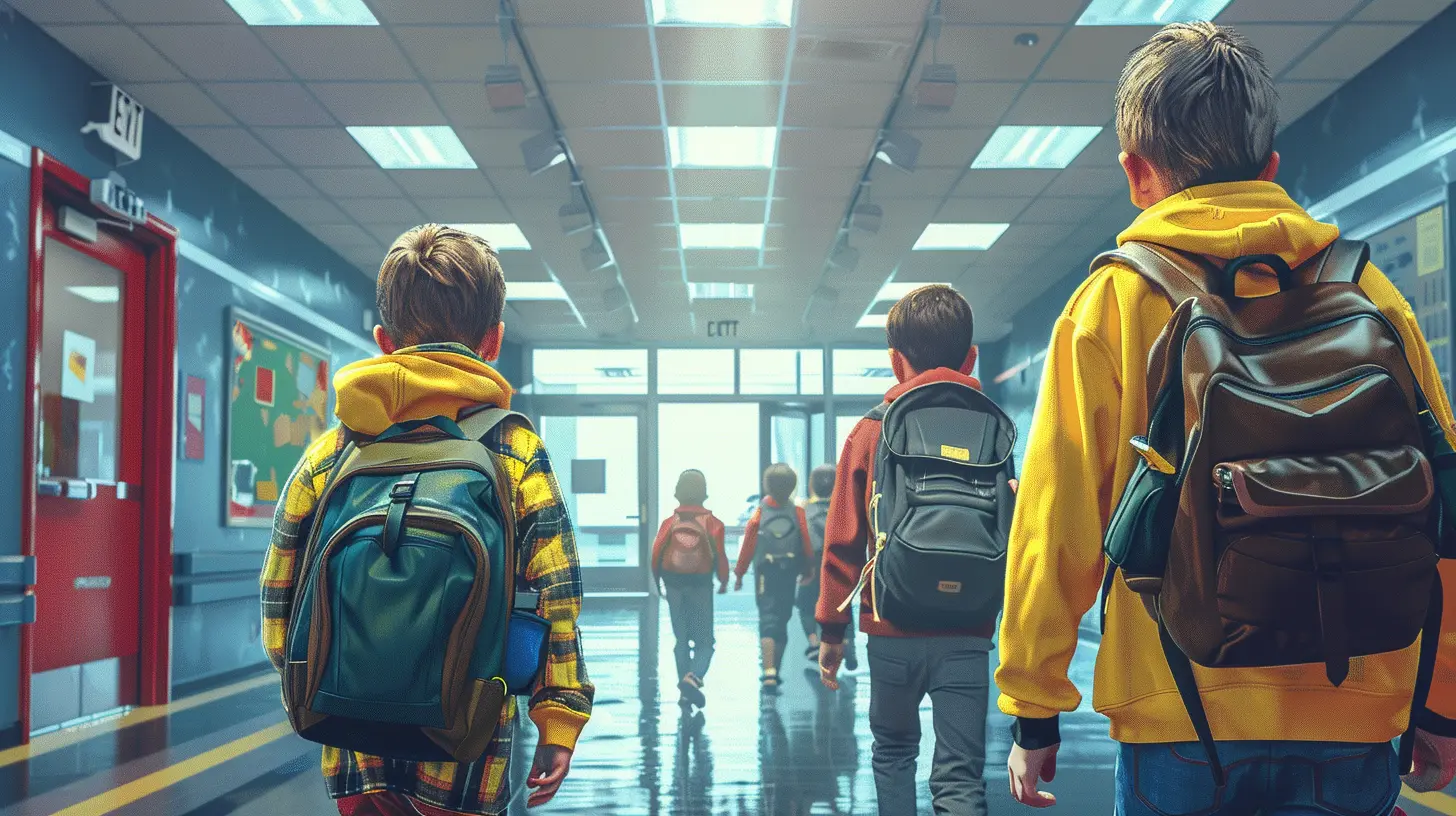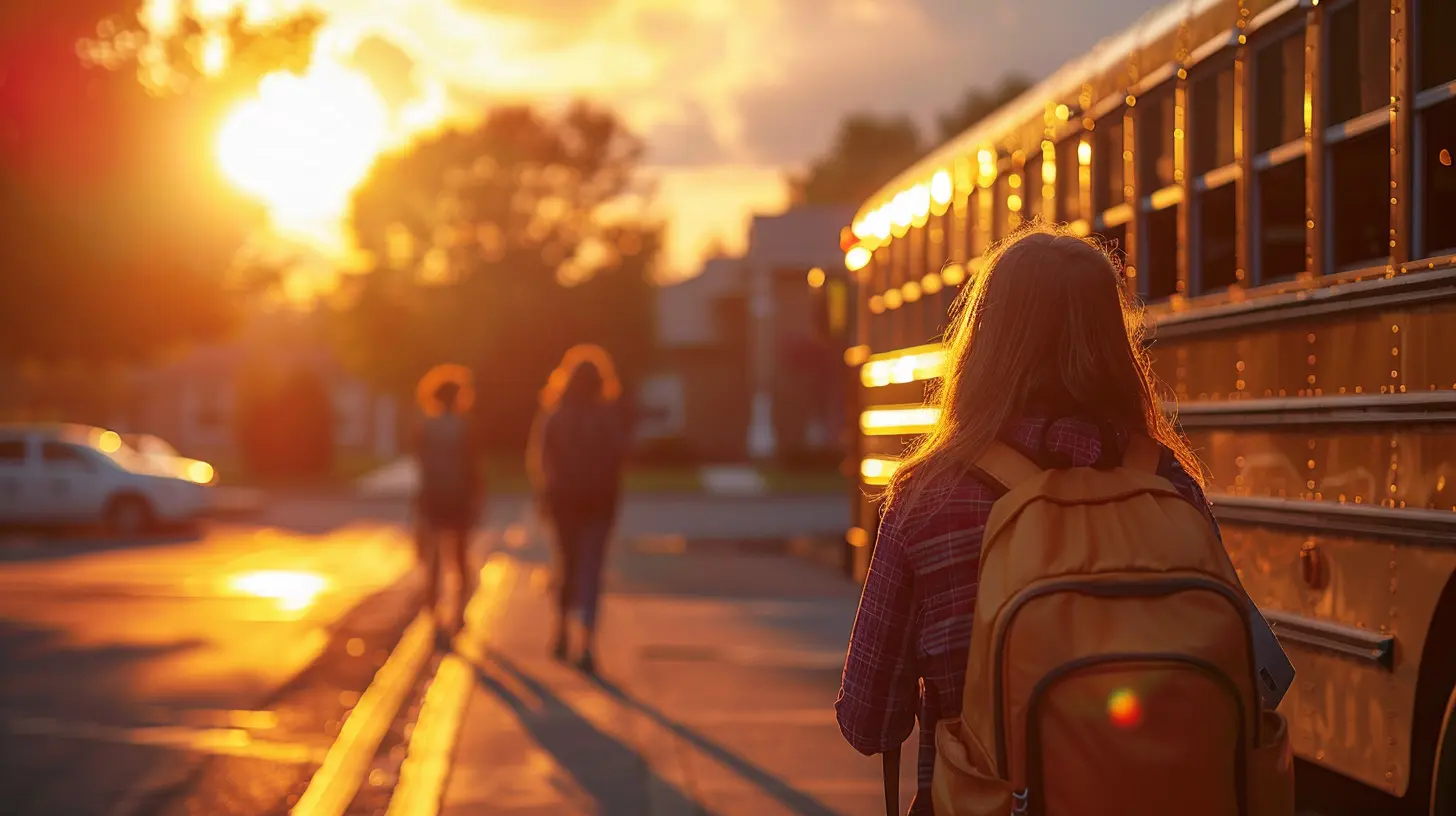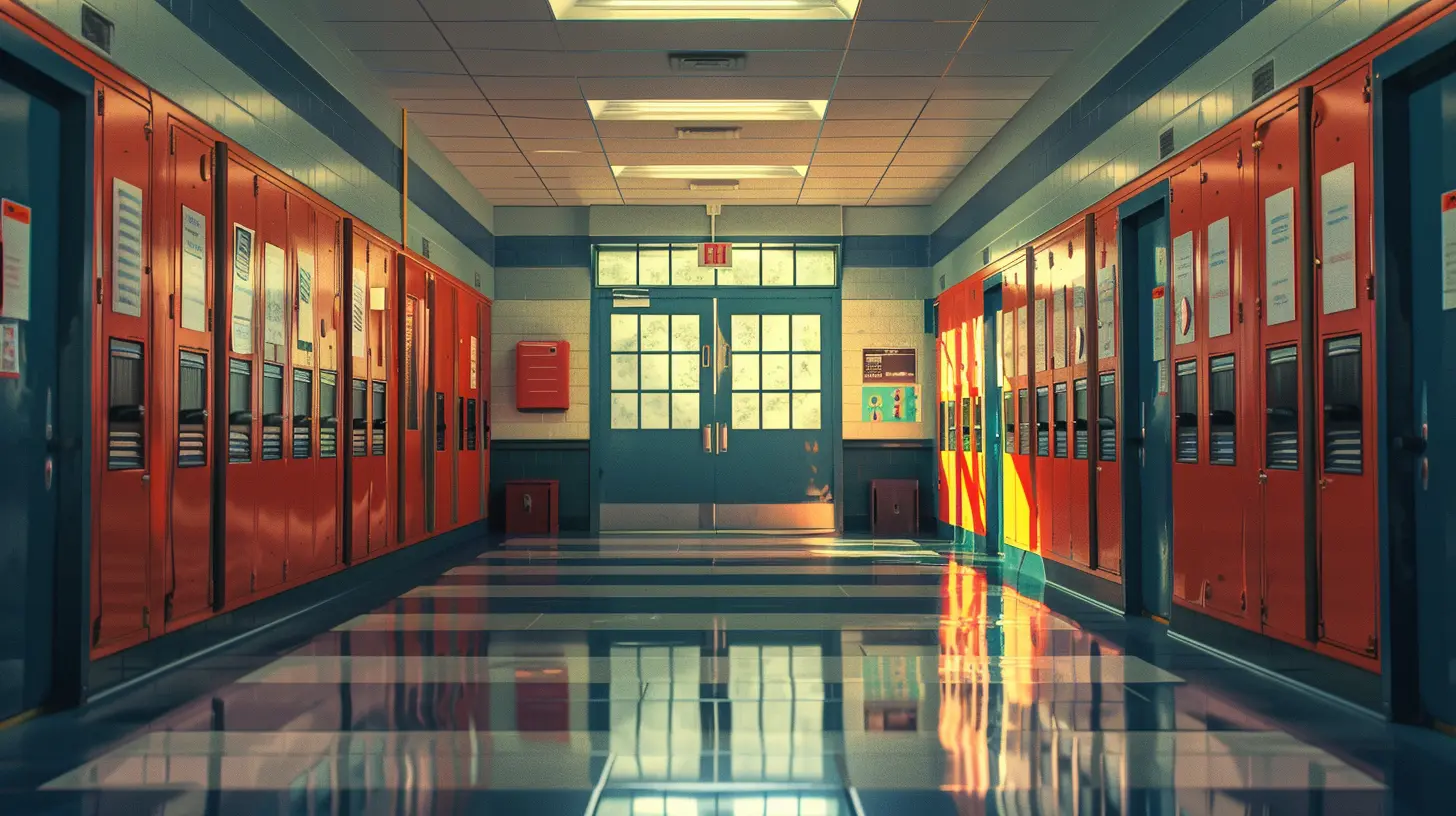The Importance of School Safety Drills: Are You Prepared?
16 December 2024
School is supposed to be a safe haven for students—a place where they can focus on learning, make friends, and grow into responsible young adults. But as much as we’d like to keep the outside world at bay, we can’t ignore the fact that emergencies can happen in schools, just like anywhere else. Whether it's natural disasters, fires, or even more dire threats like intruders, schools need to be prepared. That’s where school safety drills come in. They’re not just a box to check off; they’re essential for ensuring that students, teachers, and staff know what to do when the unexpected happens.
But here's the real question: Are you prepared? Let’s dive into the importance of school safety drills and why they should be taken seriously.

Why School Safety Drills Matter
Imagine this—you’re sitting in class, and suddenly, the fire alarm goes off. What do you do? Sure, you might think you know the way out, but in a real emergency, confusion and panic can set in. Without proper preparation, chaos can take over. That’s exactly why school safety drills matter so much.Drills aren’t just for fun or a way to break up the day. They provide life-saving practice. Think about it like rehearsing for a school play. You wouldn’t expect the performance to go smoothly without rehearsals, right? Well, safety drills are like rehearsals for real-life emergencies. They help everyone feel confident, calm, and ready to act if something goes wrong.
Building Muscle Memory
One of the key reasons why safety drills are so important is that they build muscle memory. When we practice something repeatedly, our brain stores that information in a way that makes it easier to recall under stress. In an emergency, you won’t have time to sit down and think through your options. You need to act fast. By participating in regular drills, you train your body and mind to react quickly and efficiently—even if you’re feeling scared or overwhelmed.Reducing Panic
Panic is a natural human response to danger, but it’s not particularly helpful in an emergency. When people panic, they often freeze up, make poor decisions, or cause further confusion. School safety drills are designed to reduce panic by familiarizing students and staff with the steps they need to take. The more familiar you are with an emergency plan, the less likely you are to panic when the real deal happens.Communication Is Key
Another major benefit of safety drills is that they highlight the importance of communication. In an emergency, clear communication can be the difference between a smooth evacuation and a chaotic scramble. Drills give schools the chance to test their communication systems—whether it’s the PA system, text alerts, or good old-fashioned word of mouth. They also give students and staff the opportunity to practice listening carefully to instructions and following them without hesitation.
Types of School Safety Drills
You might be wondering, "What kinds of drills do schools actually run?" The fact is, there’s no one-size-fits-all answer. Different schools face different risks based on their location, size, and student population. However, most schools focus on several key types of drills to cover a wide range of potential emergencies.Fire Drills
This is probably the most familiar type of safety drill, and for good reason. Fires can spread quickly, and it’s crucial that everyone knows how to evacuate safely. Fire drills teach students and staff the fastest and safest routes out of the building, as well as where to regroup once they’re outside. Even if your school has never experienced a fire, practicing for one is a must.Lockdown Drills
Lockdown drills are designed to prepare schools for situations where there’s an immediate threat inside or near the building—such as an armed intruder. During a lockdown drill, students and teachers practice locking doors, turning off lights, and staying out of sight. These drills can be unsettling, but they’re an unfortunate necessity in today’s world. The goal is to be prepared, not scared.Earthquake Drills
In areas prone to earthquakes, schools conduct drills to teach students how to "Drop, Cover, and Hold On." Earthquake drills help students understand what to do when the ground starts shaking, such as taking cover under sturdy furniture and staying put until the shaking stops.Severe Weather Drills
Tornadoes, hurricanes, and other forms of severe weather can strike with little warning. During severe weather drills, students practice moving to a designated safe area—usually a windowless room on the lowest floor of the building. These drills are especially important in regions where extreme weather is common.Evacuation Drills
In some cases, the safest option during an emergency is to evacuate the school entirely. Evacuation drills help students and staff practice leaving the campus and moving to a safe location, such as a nearby park or another school building.
The Role of Teachers and Staff in Safety Drills
While students play a key role in safety drills, teachers and staff are the ones leading the charge. They’re responsible for ensuring that everyone stays calm, follows the plan, and gets to safety as quickly as possible. But that doesn’t mean they’re off the hook when it comes to practicing. Just like students, teachers and staff need to participate in regular drills to stay sharp.Leading by Example
During a drill, students will look to their teachers for guidance. If a teacher is calm and collected, their students are more likely to stay calm as well. On the flip side, if a teacher appears flustered or unsure of what to do, that anxiety can spread to the entire class. Teachers need to lead by example, which means taking drills seriously and following the plan to the letter.Accountability
Teachers and staff are also responsible for accounting for all students during and after an emergency. That means taking attendance, making sure no one is left behind, and reporting any missing students to the appropriate authorities. In a real emergency, every minute counts, and knowing exactly who’s safe and who’s not can save lives.
Involving Parents in School Safety
School safety doesn’t stop at the classroom door. Parents play an important role in reinforcing the lessons learned during safety drills and ensuring that their children understand the importance of being prepared. Schools should make a point to include parents in the conversation about safety by sharing their emergency plans and encouraging parents to talk to their kids about what to expect during a drill.Discussing Safety at Home
Parents can help their children feel more comfortable with school safety drills by discussing them at home. Kids might feel anxious about the idea of a fire or a lockdown, but talking things through can ease their fears. Remind them that drills are just practice and that the goal is to keep everyone safe.Creating a Family Emergency Plan
It’s also a good idea for families to create their own emergency plans. After all, emergencies don’t just happen at school. Having a plan for what to do at home in the event of a fire, earthquake, or another disaster can help children feel more confident and prepared.Making Drills More Effective
Now, I’ll be honest with you—drills can sometimes feel repetitive. If you’ve been through the same fire drill 10 times, it’s easy to start tuning out. But that’s exactly why it’s important to keep drills engaging and effective. Here are a few ways schools can improve their safety drills:Vary the Scenarios
One way to keep drills fresh is by varying the scenarios. For example, instead of always conducting fire drills at the same time of day, schools could run them during lunch or between classes. This forces students and staff to think on their feet and practice evacuating from different parts of the building.Involve Emergency Responders
Another way to make drills more realistic is by involving local emergency responders. Having firefighters, police officers, or paramedics participate in drills can give students and staff a better sense of what to expect in a real emergency. It also helps emergency responders familiarize themselves with the school’s layout and emergency procedures.Conduct Debriefs
After a drill, it’s important to conduct a debrief to assess what went well and what could be improved. This could involve gathering feedback from students, teachers, and staff, as well as reviewing the timing and execution of the drill. The goal is continuous improvement, so every drill should be seen as a learning opportunity.
Conclusion: Are You Prepared?
At the end of the day, school safety drills are about one thing—being prepared. Emergencies are unpredictable, but that doesn’t mean we have to face them unprepared. By practicing regularly, staying calm, and following the plan, we can dramatically increase our chances of staying safe when the unexpected happens.So, the next time your school runs a safety drill, don’t roll your eyes or treat it like a break from class. Think of it as an opportunity to sharpen your skills and prepare for the future. After all, when it comes to your safety, there’s no such thing as being too prepared.
all images in this post were generated using AI tools
Category:
School SafetyAuthor:

Bethany Hudson
Discussion
rate this article
16 comments
Julian Alexander
Oh sure, because nothing says “fun day at school” like practicing how to hide from imaginary threats. What a thrill!
March 28, 2025 at 4:59 AM

Bethany Hudson
While it may not seem thrilling, safety drills are crucial for preparedness and can ultimately save lives.
Molly Campbell
Preparedness is not just a protocol; it’s a promise to our students and staff. School safety drills empower our community, fostering confidence and resilience. Let’s prioritize these essential practices to ensure a secure and nurturing educational environment for all!
February 13, 2025 at 4:26 AM

Bethany Hudson
Thank you for highlighting the vital role of preparedness in fostering a safe school environment. Prioritizing safety drills indeed strengthens our community's confidence and resilience.
Josephine Williams
Empower students through preparedness—safety drills save lives and build resilience!
January 31, 2025 at 11:55 AM

Bethany Hudson
Absolutely! Preparedness through safety drills not only enhances student safety but also fosters resilience and confidence in emergency situations. Thank you for your support!
Nymira Davis
School safety drills are essential for creating a secure environment for our students. Being prepared not only protects lives but also fosters confidence and resilience. Let's prioritize safety together, ensuring our schools are havens of learning and growth!
January 28, 2025 at 4:52 AM

Bethany Hudson
Absolutely! School safety drills are vital for ensuring preparedness and fostering a safe, supportive learning environment. Prioritizing safety is key to protecting our students and promoting resilience.
Francesca Kim
School safety drills are not just routine; they are vital lifelines that empower students and staff to respond with confidence in emergencies. Let’s commit to being prepared—together, we can create a safer learning environment where every individual feels secure and ready to thrive!
January 26, 2025 at 5:49 AM

Bethany Hudson
Thank you for your insightful comment! I completely agree—school safety drills are essential for ensuring everyone is prepared and confident in emergency situations. Together, we can enhance safety and create a secure environment for all.
Isaiah Mahoney
Preparation saves lives—act now!
January 18, 2025 at 1:01 PM

Bethany Hudson
Absolutely, preparation is key! Regular drills ensure that everyone knows how to respond effectively in emergencies. Let's prioritize safety together!
Quade Navarro
School safety drills are essential for building confidence and readiness among students and staff. They empower us to respond effectively in emergencies, fostering a culture of safety and resilience. Remember, preparation today paves the way for a secure and supportive learning environment tomorrow—let's stay prepared together!
January 13, 2025 at 8:28 PM

Bethany Hudson
Absolutely! School safety drills are crucial for ensuring everyone is prepared and confident in emergency situations. Together, we can create a safer learning environment.
Pandora Rocha
Preparation saves lives—safety drills are essential!
January 6, 2025 at 7:37 PM

Bethany Hudson
Absolutely! Regular safety drills are crucial for ensuring students and staff know what to do in emergencies, ultimately saving lives.
Mila McElroy
School safety drills: the only time running in circles and shouting is encouraged! Remember, if you can master the art of ducking under your desk while pretending to be a tortoise, you’re halfway to being prepared. Just don’t forget your snack!
January 3, 2025 at 11:48 AM

Bethany Hudson
Great point! School safety drills can feel a bit silly, but they really do help prepare students for emergencies. Plus, who doesn't love a snack break?
Elowis Sharpe
Excellent insights on school safety drills! Preparation is key to ensuring student well-being. Thank you!
December 27, 2024 at 1:47 PM

Bethany Hudson
Thank you for your feedback! I'm glad you found the insights valuable. Staying prepared is indeed essential for student safety!
Darby McKee
This article raises intriguing questions about school safety drills! How do different schools approach preparedness? What unique strategies have been implemented to engage students? I'm curious to learn more about the effectiveness of these drills in real-life scenarios.
December 19, 2024 at 8:43 PM

Bethany Hudson
Thank you for your thoughtful comment! Schools vary in their approaches to safety drills, often incorporating age-appropriate strategies and hands-on engagement techniques. Many have reported that regular drills enhance student awareness and readiness, making a significant difference in real-life emergencies. I'm glad to see your interest in this important topic!
Rhiannon Dorsey
Oh, absolutely! Who doesn’t love a surprise fire drill to disrupt math class? Nothing says “prepared” like a spontaneous sprint to the nearest exit while questioning your life choices. Safety first, excitement second!
December 19, 2024 at 11:43 AM

Bethany Hudson
I appreciate your humor! While drills can disrupt routine, they play a crucial role in ensuring everyone's safety during emergencies.
Damon Jimenez
Safety drills are non-negotiable essentials.
December 17, 2024 at 10:02 PM

Bethany Hudson
Absolutely! Safety drills are crucial for ensuring preparedness and protecting students and staff in case of emergencies.
Delilah McGuffey
School safety drills enhance preparedness, promote awareness, and ensure swift, effective responses to emergencies.
December 17, 2024 at 3:27 AM

Bethany Hudson
Thank you for your insightful comment! I completely agree—school safety drills are essential for building readiness and fostering a culture of safety in our schools.
Chantal Perry
Thank you for highlighting this vital topic; preparedness can truly make a difference in our children's safety.
December 16, 2024 at 7:31 PM

Bethany Hudson
You're welcome! I'm glad you found the topic important—preparedness is key to ensuring our children's safety.
Wesley McAuley
School safety drills are essential for preparedness and peace of mind. They foster resilience, ensure everyone knows their role, and build a safer environment for all.
December 16, 2024 at 5:25 AM

Bethany Hudson
Thank you for your insightful comment! I completely agree—school safety drills are crucial for building a prepared and resilient community.
MORE POSTS

Collaborative Learning and the Development of Communication Skills

How to Choose the Right ESL Course for Your Learning Style

The Role of Parental Involvement in Blended Learning

Building Your Professional Brand as an Educator

How Co-Teaching Can Enhance Collaborative Learning

Collaborative Learning for Social Justice Education

Environmental Ethics: A Crucial Lesson in Modern Education

The Role of Social-Emotional Learning in Student Collaboration

Simple Classroom Management Techniques to Reduce Stress

How to Use Manipulatives to Enhance Math Comprehension